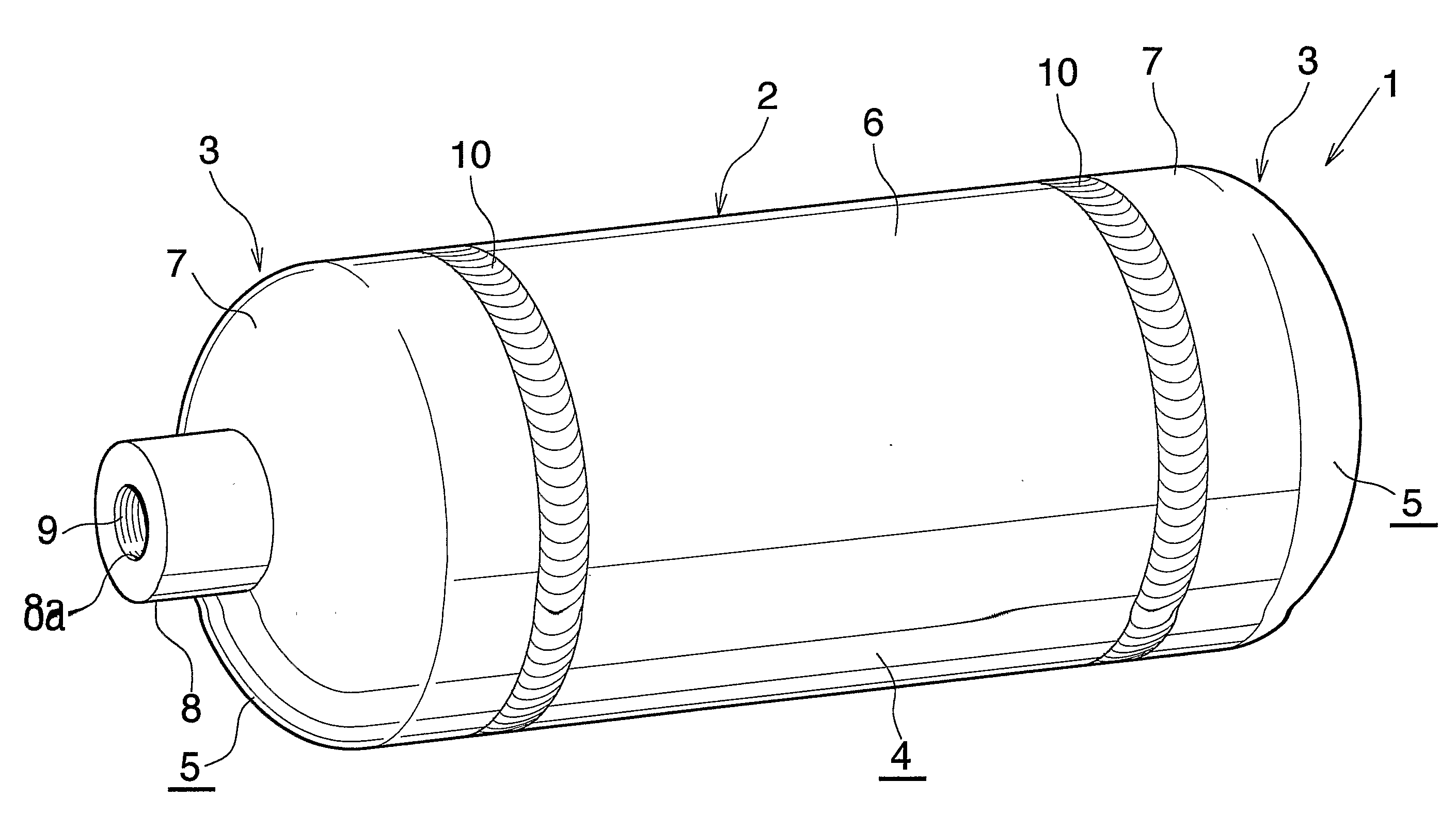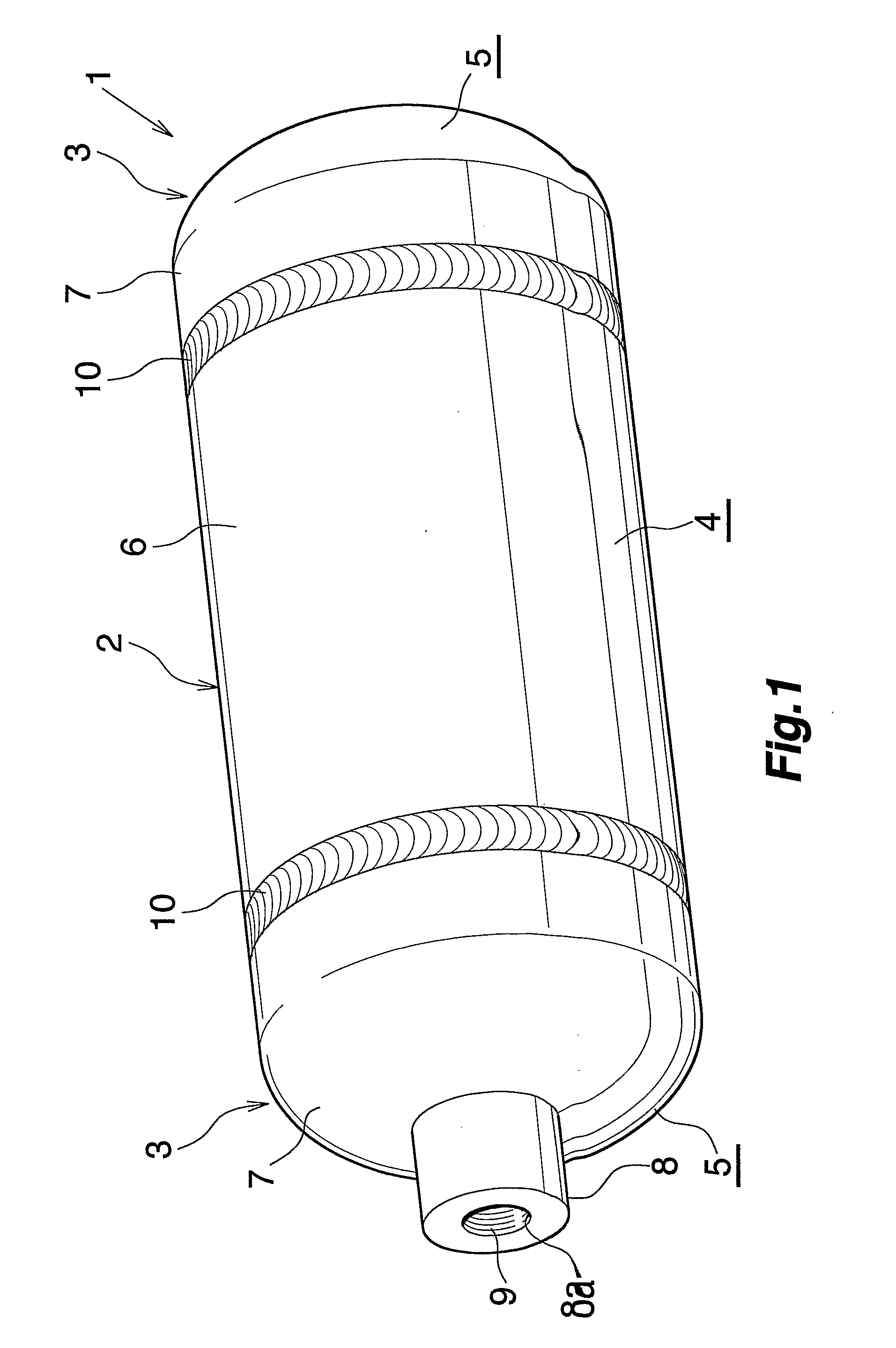Process for Fabricating Pressure Vessel Liner
a technology for pressure vessels and lines, applied in the field of lines, can solve the problems of shortening the life of the probe, insufficient strength of the vessel liner, etc., and achieve the effects of reducing apparatus costs, preventing deformation, and improving pressure resistance and gas tightness
- Summary
- Abstract
- Description
- Claims
- Application Information
AI Technical Summary
Benefits of technology
Problems solved by technology
Method used
Image
Examples
Embodiment Construction
[0045]An embodiment of the invention will be described below with reference to the drawings.
[0046]FIG. 1 shows the overall construction of a pressure vessel liner fabricated by a production process of the invention, and FIG. 2 is a high-pressure hydrogen gas vessel wherein the liner of FIG. 1 is used. FIGS. 3 and 4 show the process for fabricating the liner.
[0047]With reference to FIG. 1, the pressure vessel liner 1 comprises a hollow cylindrical trunk 2, and head plates 3 for closing openings at opposite ends thereof. More specifically, the liner 1 comprises a first liner component 4 made of an aluminum extrudate tube having an openings at each of opposite ends thereof and providing the trunk 2, and two second liner components 5 of aluminum joined to the respective opposite ends of the first component 4 and providing the head plates 3. The second liner components 5 are made by forging or cutting.
[0048]The first liner component 4 has a peripheral wall 6 having a circular cross secti...
PUM
| Property | Measurement | Unit |
|---|---|---|
| Thickness | aaaaa | aaaaa |
| Angle | aaaaa | aaaaa |
| Time | aaaaa | aaaaa |
Abstract
Description
Claims
Application Information
 Login to View More
Login to View More - R&D
- Intellectual Property
- Life Sciences
- Materials
- Tech Scout
- Unparalleled Data Quality
- Higher Quality Content
- 60% Fewer Hallucinations
Browse by: Latest US Patents, China's latest patents, Technical Efficacy Thesaurus, Application Domain, Technology Topic, Popular Technical Reports.
© 2025 PatSnap. All rights reserved.Legal|Privacy policy|Modern Slavery Act Transparency Statement|Sitemap|About US| Contact US: help@patsnap.com



